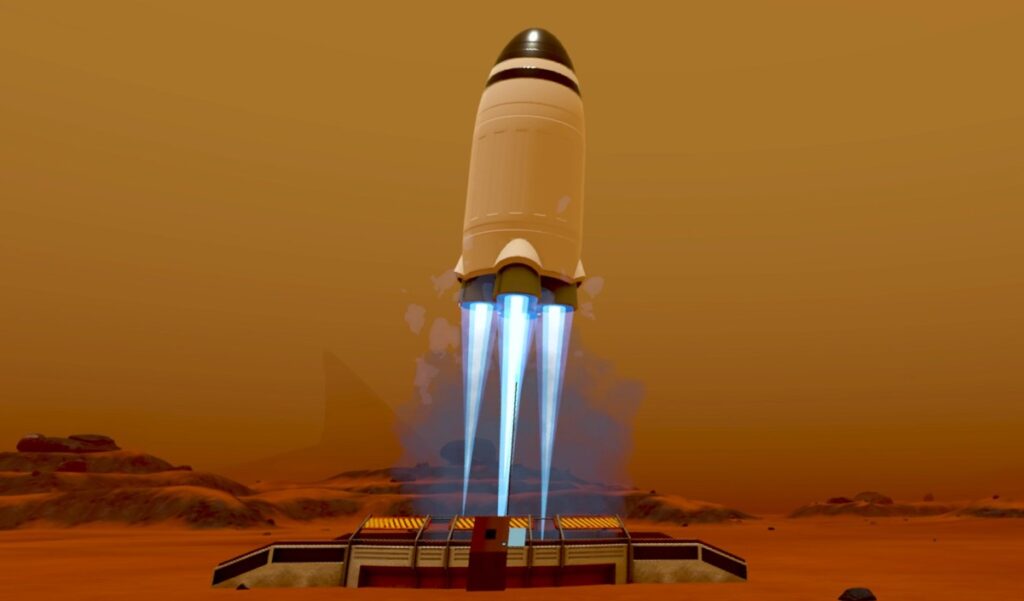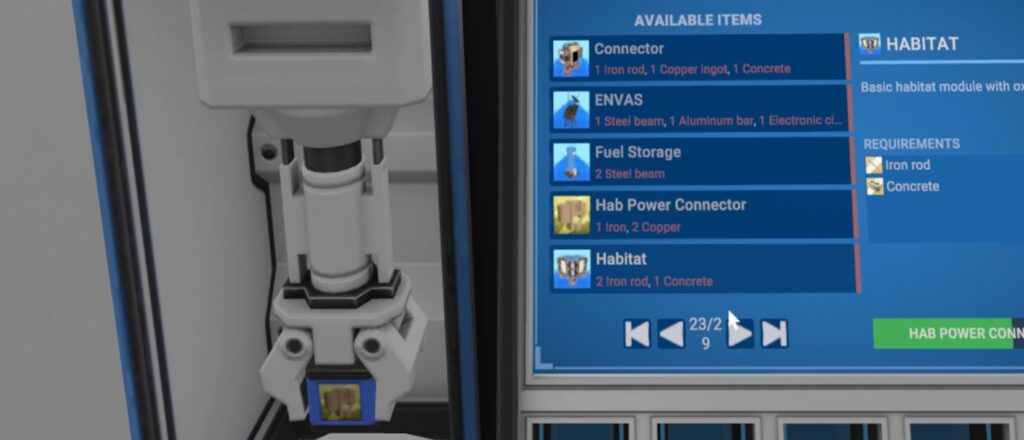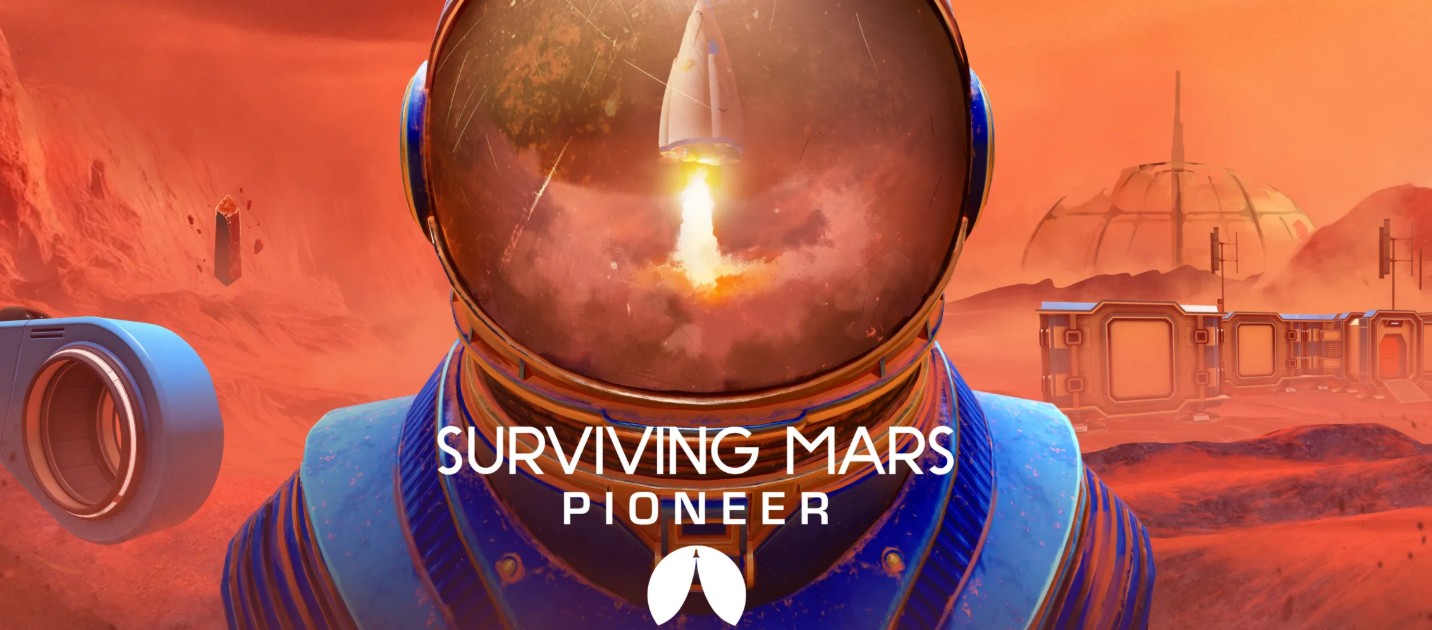Surviving Mars: Pioneer lands on Meta Quest VR not as a port but a transformation. This ground-up redesign leverages VR’s unique capabilities to dissolve the screen barrier—placing you physically on the rust-colored plains. Where traditional strategy games operate through menus and maps, Pioneer demands you grab, build, and problem-solve with motion controllers. Your gloves scrape against Martian soil; dust storms roar in 360-degree audio. This tactile shift matters: VR amplifies the isolation and high-stakes tension of colonizing an alien world.
Beyond the Screen – Mars in Your Hands
Abstraction Games reengineered every interaction for presence. Oxygen levels deplete? You’ll instinctively turn toward malfunctioning filters. Resource shortages manifest as flickering lights in your peripheral vision—no HUD required. Such sensory translation tackles VR strategy’s core challenge: converting spreadsheet-like management into environmental storytelling. The $29.99 price point positions Pioneer as a benchmark for mid-tier VR experiences—proving depth needn’t sacrifice accessibility.

Meta Quest owners gain more than a game—they inherit a testbed for spatial problem-solving. Could physically walking your dome layout reveal design flaws faster than a top-down view? Early players report heightened emotional stakes when colonists starve meters from your virtual body. This isn’t just immersion; it’s embodiment of survival.
Tactile Red Planet: The VR Mechanics Revolution
Resource management becomes viscerally physical in Pioneer. Forget dragging icons—you’ll grab metallic salvage with a squeeze of your controller, feeling haptic feedback mimic weight distribution as you lug it to constructors. Oxygen generators demand manual calibration: twist valves clockwise until resistance simulates pressure seals locking. This deliberate slowness isn’t padding—it forces prioritization. During sudden solar flares, you might abandon half-built turbines to physically crouch and shield colonists with deployable barriers. Every action carries opportunity cost amplified by VR’s time dilation.

Disaster response transforms into full-body choreography. Sandstorms don’t just obscure vision—they trigger controller vibrations intensifying with wind velocity. To stabilize wobbling solar panels, you brace one virtual arm against their frame while hammering support struts with the other. Failing power grids emit directional crackles through Quest’s spatial audio—close your eyes, and you could pinpoint the faulty transformer. These sensory cues replace traditional UI, creating what developers call ‘environmental urgency.’ One slip during methane ice extraction? The resulting explosion physically recoils your viewpoint.
Base layout leverages VR’s spatial genius. While flat versions used top-down grids, Pioneer requires you to physically orbit structures to spot airflow blockages between domes. Testers optimized medical bay placements by kneeling to examine underground pipe connections—a perspective impossible on monitors. Unexpected advantage? Walking through cramped corridors reveals psychological impacts: colonists develop ‘claustrophobia’ debuffs if you design narrow passages. Your body becomes the blueprint validator.
Colonist interactions gain disturbing intimacy. Lean close to hear their whispered complaints about malfunctioning life support—their pixelated eyes tracking your movement. Neglect repairs, and you’ll witness suffocation animations from centimeters away. Early players reported abandoning min-max efficiency tactics after seeing a botanist collapse beside their virtual boots. VR doesn’t just show consequences; it makes you complicit.
Performance optimizations enable seamless crisis management. Abstraction’s custom engine renders dust particle collisions at 72fps during base-wide emergencies by dynamically reducing terrain texture resolution—maintaining immersion without stutter. Clever trick? Distant structures fade into stylized wireframes during sandstorms, preserving clarity while reducing GPU load. This lets Quest handle 50+ colonists without fogging—critical when micromanaging simultaneous water leaks and rocket landings.

Unobvious tip: Use your virtual tablet as a literal shield. Holding it overhead deflects meteor fragments during showers—saving structures while sacrificing research data. Warning: Over-reliance on teleportation breaks immersion; enable smooth locomotion to feel Martian gravity’s subtle drag. Alternative strategy: Assign drones during calm periods to reserve stamina for hands-on crisis management when disasters inevitably strike.
Carrying Mars Forward – Lessons Beyond the Headset
Surviving Mars: Pioneer achieves more than VR immersion—it forges a new language for strategy games. By replacing menus with physical actions and UI with environmental cues, it demonstrates how spatial presence transforms decision-making. Your failures linger because you inhabited them: the weight of salvaged metal still in your palms, the echo of colonists’ final breaths. This isn’t just about surviving Mars; it’s about understanding how embodiment reshapes problem-solving.
Take these lessons beyond the game. Apply Pioneer’s ‘environmental urgency’ to daily tasks—organize your workspace by physically mapping dependencies like dome connections. Notice how VR’s forced deliberation improved your prioritization? Emulate that focus by tackling high-stakes tasks with intentional slowness. And when overwhelmed, recall sandstorm tactics: anchor yourself to one critical action before branching out.
For developers, Pioneer proves depth survives VR translation when mechanics serve theme. Abstraction’s triumph wasn’t porting systems but reimagining survival as tactile poetry. Future titles should follow their lead—replace spreadsheets with sensation, metrics with muscle memory. As you remove the headset, consider: if managing oxygen filters in VR feels this consequential, what real-world challenges deserve your hands-on attention next?

